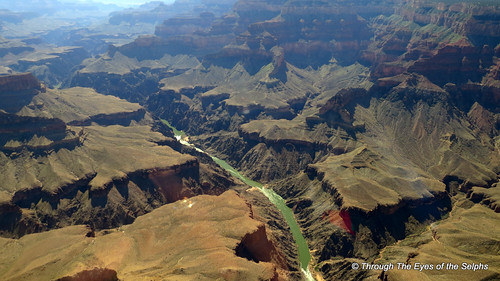Driving from the Albuquerque area we made the short drive to Springer, New Mexico for a one night stay. Before heading to Colorado the next morning we drove to the Philmont Boy Scout Ranch in Cimarron, New Mexico.  Bill had been looking forward to visiting Philmont for a long time. In 1938, an oil magnate who was very impressed with boy scouts who visited his ranch, donated 35,857 acres of land to the Boy Scouts of America.
Bill had been looking forward to visiting Philmont for a long time. In 1938, an oil magnate who was very impressed with boy scouts who visited his ranch, donated 35,857 acres of land to the Boy Scouts of America.  Today the Philmont Boy Scout Ranch, whose name is derived from Waite Phillips who gave them the land, is a National High Adventure Base where Boy Scouts take part in backpacking expeditions and other outdoor activities. It is one of the largest youth camps in the world in land with over 23,000 Scouts and adults leaders visiting each summer between the beginning of June and middle of August.
Today the Philmont Boy Scout Ranch, whose name is derived from Waite Phillips who gave them the land, is a National High Adventure Base where Boy Scouts take part in backpacking expeditions and other outdoor activities. It is one of the largest youth camps in the world in land with over 23,000 Scouts and adults leaders visiting each summer between the beginning of June and middle of August.  While we were there Bill toured their Philmont Museum and Seton Memorial Library. The only documented Tyrannosaurus Rex track in the world was discovered within the camp’s boundaries in 1993. We noticed that the Santa Fe Trail ran thru the ranch.
While we were there Bill toured their Philmont Museum and Seton Memorial Library. The only documented Tyrannosaurus Rex track in the world was discovered within the camp’s boundaries in 1993. We noticed that the Santa Fe Trail ran thru the ranch.
On the way to Colorado we stopped in Raton, New Mexico at the NRA Whittington Center, the largest and most complete shooting and hunting complex in the United States. Bill was able to spend some time doing some pistol shooting practice.
As we passed through the end of the dusty plains of New Mexico into Colorado we were met with the green mountains to our west and the sight of even more snow capped mountains. We climbed and dropped in elevation until arriving at Trinidad Lake State Park (elevation 6300 ft) outside of Trinidad, Colorado. The 800 acre Trinidad Lake was created in 1978 when the U.S. Army Corps of Engineers built a dam. The Trinidad Lake State Park is a very popular area for fishermen.
While there we drove into the small town of Trinidad and did a bit of sightseeing. We visited a statue of Christopher (Kit) Carson an American frontiersman and found a geocache nearby.  We drove a dirt road to the top of Simpson’s Rest, a sandstone bluff on a mountain with great views of Trinidad, Purgatoire Valley and the Sangre De Cristo Mountain Range, part of the Rocky Mountains. It was amazing to see the combination of rolling prairies, hills and mountains. Across those prairies the pioneers and traders traveled along the Santa Fe Trail. This trail wound through what is now downtown Trinidad and across the mountainous Raton Pass which we crossed over on the way to Trinidad. On the top is a Trinidad sign which lights up at night as well as the grave marker of George S. Simpson.
We drove a dirt road to the top of Simpson’s Rest, a sandstone bluff on a mountain with great views of Trinidad, Purgatoire Valley and the Sangre De Cristo Mountain Range, part of the Rocky Mountains. It was amazing to see the combination of rolling prairies, hills and mountains. Across those prairies the pioneers and traders traveled along the Santa Fe Trail. This trail wound through what is now downtown Trinidad and across the mountainous Raton Pass which we crossed over on the way to Trinidad. On the top is a Trinidad sign which lights up at night as well as the grave marker of George S. Simpson.  Simpson was a famous trail blazer, scout, trader and explorer in the area. Legend says that in 1867 Simpson was confronted by warring Ute Indians. He fled up the sandstone bluff and hid for three days. He was thankful for the sandstone bluff that saved his life and requested to be buried there. Simpson is credited with the first discovery of gold in Colorado which led to the famous 1859 Rush to the Rockies.
Simpson was a famous trail blazer, scout, trader and explorer in the area. Legend says that in 1867 Simpson was confronted by warring Ute Indians. He fled up the sandstone bluff and hid for three days. He was thankful for the sandstone bluff that saved his life and requested to be buried there. Simpson is credited with the first discovery of gold in Colorado which led to the famous 1859 Rush to the Rockies.
We stopped by the town’s Mount San Rafael Hospital to see a 28 by 12 foot ceramic mural designed and created by a nun, Sister Augusta Zimmer. The history of Trinidad is depicted in the beautiful mural.
We enjoyed our time in Trinidad and it is always fascinating to see the history found in these small towns in America!














































































































































